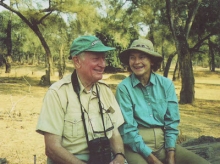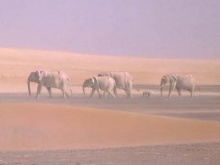Game Change
Americans were once enthralled by the legends of big game hunters who pursued elephants, lions, and other large animals for sport. These explorers traveled to exotic lands and returned with trophies and tales of daring pursuits.
Today, we seek out elephants and other exotic animals through different means: Safari-goers gaze through cameras more than gunsights, and the explorers of our age bring home data and biological samples to study.
Some people still hunt exotic game for sport, but popular culture is more focused on combating poaching and actively protecting wildlife. Many fear that elephants, both in Africa and Asia, may soon go extinct. Once popularly seen as objects of prey, elephants are today the focus of global conservation efforts.
Through rare books, photographs, manuscripts, artwork, and objects dating from the late 1800s to today, including a rare ca. 1909 toy set and a modern elephant radio collar, Game Change: Elephants from Prey to Preservation traces this shift in public attitudes about elephants from the late 19th century to the critical conservation concerns of today.
|
Russell and Aileen Train were deeply committed to conservation and the protection of wildlife. Russell Train would go on to found the U. S. World Wildlife Fund and become administrator of the Environmental Protection Agency. The Russell E. Train Africana Collection, now a part of the Smithsonian Libraries’ Joseph F. Cullman 3rd Library of Natural History, contains works dating from the earliest western exploration of the African continent to the modern day. Selections from this remarkable collection are prominently featured in Game Change. |
The Smithsonian Libraries is grateful to wildlife artist Paul Bosman’s family for allowing us to use his artwork in the exhibition’s design. |
Visit the Exhibition
Now through March 5, 2020
Smithsonian National Museum of Natural History, Ground Floor
10th St. and Constitution Ave NW, Washington, DC 20560
A Smithsonian Libraries Exhibition
Curated by Cheryl Braunstein, Smithsonian’s National Zoo and Conservation Biology Institute


